AWD
S to Z of Surfing Vehicles Dude
“Surfs up!”
“Dude, how am I gonna get there?”
“Bro, you need a car!”

Summer is here, and surfing is a great lifestyle for getting out, chasing the waves, and getting some immunity-boosting Vitamin D. In fact, any sort of outdoor adventure and exercise will see you a fitter and healthier person for getting out there and doing it. What 2022 cars make for an ideal surfer’s or outdoorsy-person’s companion? The following are several useful vehicles that will transport you, a friend or two, some gear, and surfboards/mountain bikes through something more than just a little puddle, mud or soft sand.
Dedicated vans or MPVs with AWD like the Volkswagen Multivan, LDV G10, Mercedes-Benz V-Class, Kia Carnival, Mercedes-Benz Valente, Volkswagen Caravelle, Honda Odyssey, Hyundai STARIA, Volkswagen California, Toyota Granvia, Mercedes-Benz Marco Polo ACTIVITY, and the Volkswagen Caddy are potentially great for surfing travels with one, two or more mates. Some, but not all, will offer AWD. Depending on how far down onto the beach you want to get your MPV or Van, AWD is definitely the way to go for ensuring you have a better chance of getting through soft sand and out of sticky situations.
For years, station wagons have been a go-to machine for the surfer; for good reason too as they offer plenty of space for lugging gear and for sleeping. Having a vehicle that can get you across country and down onto the beach makes for the ultimate surfer’s vehicle. Outside of the list of MPVs/vans above, there are some great vehicles worth a look if you’re into doing a bit of surfing, fishing and any other type of outdoor adventure.
Here is the best of them from S (Skoda) to V (Volvo). Let us know if we’ve missed anything in between!
Skoda Kodiaq
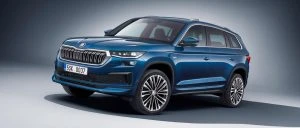
Arguably the best in the business is Skoda’s Kodiaq. It does everything a surfer wants very well. The 2.0-litre Turbo petrol engine is smooth and powerful. 4×4 capability is at the ready, and the Kodiaq Wagon boasts 7-seats and a 7 speed automatic 4×4 gearbox. A 132 kW/320 Nm turbo-petrol is under the bonnet of the base and Sportline variants. The punchy RS packs a 176 kW/500 Nm version of the 2.0-litre engine. The AWD-only Skoda not only offers 3 rows of seats, it is also able to open up 2005 litres of boot space. With standard autonomous emergency braking, adaptive cruise control, a seven-speed dual-clutch gearbox, active LED headlights and a cosy, suede-trimmed interior complete with sat-nav, keyless start, two-zone climate-control and side and rear-window blinds, the Skoda Kodiaq is one very impressive package.
Skoda Superb AWD Scout
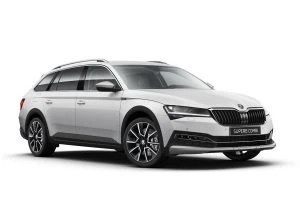
Grab yourself an AWD Skoda Superb Scout crossover wagon and surfing trips just got a whole lot nicer. Under the Scout’s bonnet sits a 200 kW/350 Nm, 2.0-litre turbo petrol engine with a seven-speed dual-clutch gearbox. The spacious, comfortable and high-quality cabin is laden with plenty of soft-touch panels and easy-to-read interfaces. Safety technology includes front and rear autonomous emergency braking, rear cross-traffic alert, lane departure warning with active assist, blind-spot monitoring and self-parking. The Superb Wagons will take 660 litres of luggage, expanding to 1950 litres with the rear seats folded. Towing capacity is rated at 2.2 tonnes.
SsangYong Rexton
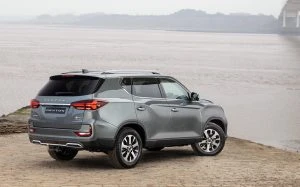
Here’s another strong contender for best surfing wagon. The seven-seater, five-star safe, 8-speed auto, 4×4, 2.2 Diesel-Turbo SsangYong Rexton large SUV uses a 149 kW/441 Nm 2.2-litre turbo-diesel that boasts less than 9 litres/100 km fuel economy. With, all-independent suspension, all-wheel disc brakes and an eight-speed auto gearbox, the big Korean-made SUV is equipped to go bush. Boot space is a handy 1806 litres with second and third rows flat.
Subaru Forester
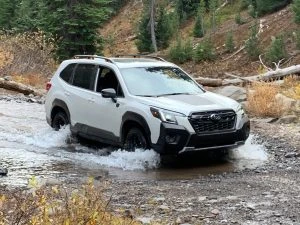
An icon in the surfing fraternity, the Subaru Forester always delivers the goods. 2022 sees the 5-door wagon offer a CVT 7-speed AWD with even autonomous emergency steering standard. This is five-star safe, great on sipping small amounts of fuel and comfortable on any surface of road. The Forester continues with the 136 kW/239 Nm 2.5-litre four-cylinder boxer engine, and the 2.0-litre mild-hybrid claims 6- to 7 litres/100 km. The Forester offers generous levels of passenger space, and the luggage capacity can open to 1768 litres with the rear seats folded. Of course, the Forester is known for going places that Physics suggest it shouldn’t. It is capable off-road, just keep in mind that it’s not a “Landie”!
Subaru Outback
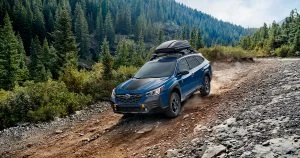
Surprise, surprise, here is another Subaru, and a favourite with surfers. The latest Subaru Outback is the newest of a long line of wagon’s that have carried surfboards and surfers all around the country. Subaru’s Outback is made for the surfer’s design brief, so it will happily go off-road, cruise the open road, accommodate a mattress and provide great accident protection. Five-star safe and comfortable to drive, the 5-door Outback Wagon uses a 138 kW/245 Nm 2.5-litre boxer petrol four-cylinder driving all four wheels through a new CVT transmission. Subaru’s Outback crossover is bigger inside and out, employs the company’s latest global platform and features all the latest safety technology. You can tow up to two-tonnes, and you have a boot with up to 2144 litres!
Toyota
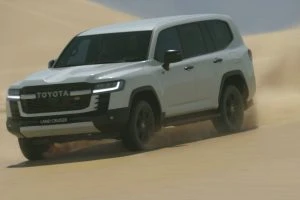
Plenty of choice in the Toyota brand. Take your pick out of the RAV4 (smallest), Kluger, Fortuner, Prado (largest), and Land Cruiser. All will get you far and beyond the tarmac, the Prado and Land Cruiser being truly 4×4 bush bashing capable. Comfortable, reliable, and safe. Boot space starts at around 1800 litres for the RAV4 and gets bigger from here.
Volkswagen Touareg
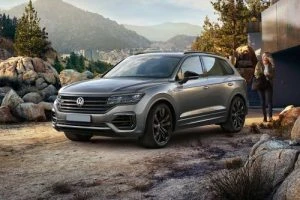
Good things come from VW, as surfers well know – the VW Kombi being a surfing icon. Well-dressed, big and brutish is what many of the ladies like, and the Volkswagen Touareg has it all. Available as a huge 5-door SUV shape, the Touareg boasts five-star safety, 4×4 competence, and a huge boot (over 1800 litres). Passenger space is right up there with the best in the business. It is available with a choice of three diesel engines: two 3.0-litre V6s – 170 kW/500 Nm (170 TDI) and 210 kW/600 Nm (210 TDI), plus a ruthless 310 kW/900 Nm 4.0-litre twin-turbo V8 monster.
VW Tiguan Allspace
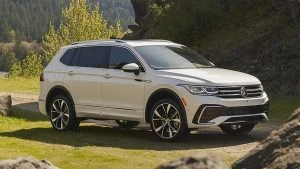
Over 2000 litres of boot space (Allspace version), a practical no-nonsense interior, 5-star safe, comfortable to drive, AWD availability, and the Tiguan starts to make sense. It is also another vehicle that has self-parking capability. With 4MOTION AWD and a dual-clutch six or seven-speed auto transmissions, the Tiguan is an impressive mid-size SUV. The choice of motors is good; a 110 kW/250 Nm 1.4-litre and 162 kW/350 Nm 2.0-litre petrol turbo is available along with the torquey and thrifty 147 TDI 147 kW/400 Nm turbo-diesel.
Volvo XC60
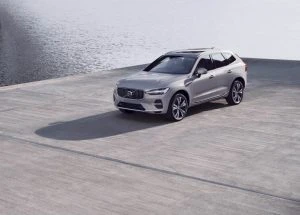
Volvos are amazing cars to drive. They are so comfortable, elegant, and boast all the best tech. Safety is a given, and the XC60 has up to 1792 litres of boot space. Five-door SUV styling, an 8-speed automatic with AWD and you’re away. Volvo’s XC60 SUV line-up is powered by petrol-only mild-hybrid 2.0-litre four-cylinder engines. The R-Design continues with the more powerful 220 kW/420 Nm B6 mild-hybrid powertrain while the Polestar Engineered sticks with the 311 kW/670 Nm T8 Twin Engine plug-in hybrid powertrain. Both are nice and responsive engines.
Volvo XC90
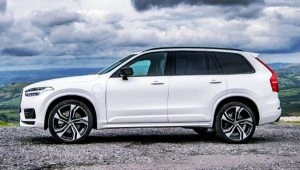
Even with all 7 seats in place, the Volvo XC90 boot can hold up to 302 litres of luggage. Folding down second and third rows makes way for 1856 litres. A superbly comfortable, AWD capable, and delivering huge safety credentials, the new Volvo XC90 is a luxury SUV like no other. All XC90s come with autonomous emergency braking, adaptive cruise control, lane-departure warning/assist, sat-nav, self-parking, AWD, an 8-speed automatic transmission and a fuel-saving idle-stop system. The XC90 D4 is powered by a 173 kW/480 Nm 2.0-litre four-cylinder turbo-diesel. The T6 petrol comes with a 140 kW/400 Nm 2.0-litre four-cylinder turbo-diesel. The 2.0-litre plug-in petrol-electric hybrid XC90 T8 claims an amazing 2.1 litres/100 km fuel consumption and slingshots to 100 km/h in 5.5 seconds!
K to R of Surfing Vehicles Dude
“Surfs up!”
“Dude, how am I gonna get there?”
“Bro, you need a car!”

Summer is here, and surfing is a great lifestyle for getting out, chasing the waves, and getting some immunity-boosting Vitamin D. In fact, any sort of outdoor adventure and exercise will see you a fitter and healthier person for getting out there and doing it. What 2022 cars make for an ideal surfer’s companion? The following are several useful vehicles that, if you’re wanting something to get you places, will transport you, a friend or two, some gear, and surfboards/mountain bikes through something more than just a little puddle, mud or soft sand.
Dedicated vans with AWD or MPVs are potentially great for surfing travels with one, two or more mates. Some, but not all, will offer AWD. Depending on how far down onto the beach you want to get your MPV or Van, AWD is definitely the way to go for getting through soft sand and sticky situations. Having a vehicle that can get you across country and down onto the beach makes for the ultimate surfer’s vehicle.
There are some very good vehicles worth a look if you’re into doing a bit of surfing, fishing and any outdoor adventure. Aside from an AWD Van or AWD MPV, here are the best of them from K (Kia) to R (Renault). Let us know if we’ve missed anything in between!
Kia Sorento

The seven-seat Kia Sorento SUV is one of the most advanced vehicles in its class. If you find parking a mean trick, then it can even park itself without anyone inside. Quiet, roomy and with a large boot, the Sorento is available in Sport, Sport+ and GT-Line and the choice of a front-drive 3.5-litre 200 kW/332 Nm V6 petrol with an eight-speed auto gearbox, an AWD dual-clutch auto 148 kW/440 Nm 2.2-litre four-cylinder turbo-diesel or a 190 kW/350 Nm PHEV. The roomy cabin is enhanced by a commodious 616-litre boot that increases to a massive, all-seats-folded 2011 litres.
Land Rover Defender

Ultimate 4×4 traction. The 2.0-litre D200, D240 and D250 diesels produce 147 kW/430 Nm, 177 kW/430 Nm and 183 kW/570 Nm respectively, while the petrol engines output 221 kW/400 Nm, 294 kW/550 Nm and 386 kW/625 Nm. All Defenders are highly capable, dual-range 4x4s, all driving through an eight-speed auto gearbox. Up to 2231 litres of boot space gives you plenty of space to sleep! 5-star safe.
Land Rover Discovery

Ultimate 4×4 traction with added sophistication. Of course, the Range Rover alternative is luxury to the max! Discoverys are big on comfort and refinement and offer up to 2104 litres of sleeping space. 5-star safe.
LDV D90

A big, cushy, well-priced 7-seater with 5-doors. Sitting on a strong ladder-frame chassis and boasting a punchy 160 kW/480 Nm, 2.0-litre bi-turbo-diesel with an eight-speed auto transmission this is a seriously decent machine. Offering rear-drive or dual-range 4WD with multi-mode terrain selection, off-roading is a breeze. 5-star safe and providing up to 2382 litres of sleeping space.
Mahindra XUV500 W10

A 7-seater with 5 doors and a 6-speed auto, the Mahindra XUV500 SUV is one of the best-value mid-size seven-seaters in Australia. It is powered by a 103 kW/320 Nm 2.2-litre turbo-petrol engine. AWD form is the best version and performs well off-road. Let down only by a 4-star safety rating, the Mahindra has over 700 litres of boot space with the third row seats flat and grows to an excellent mattress in the back material. You also get a five-year/100,000km warranty with five years of roadside assist when bought new.
Mitsubishi Outlander

Mitsubishi’s fourth generation Outlander SUV is a roomy 5-door wagon that is comfortable to drive, has all the modern tech, offering its owner plenty of space. Available in AWD, running with an 8-speed CVT gearbox, and using the new 135 kW/245 Nm 2.5-litre engine this is a reliable unit that will take you and your mates places. Boot space is up to 1461 litres, safety is 5-star, and you also get Mitsubishi’s class-leading 10 year/200,000 km warranty.
Mitsubishi Pajero Sport

Another highly rated surfer’s wagon, the 2022 Mitsubishi Pajero Sport Wagon. With its 8-speed automatic gearbox is smooth. It’s a dual-range unit with Low and High, so 4×4 traction combines with a high ground clearance and long-travel suspension to ensure plenty of off-road capability. There’s heaps of passenger space and it’s surprisingly smooth and comfortable on the road. The Pajero Sport is available in both five and seven-seat form and is powered by a 2.4-litre, 4-cylinder turbo-diesel producing 133 kW/430 Nm. 5-star safety and a boot space that’s huge. The Pajero Sport boasts a big, square cargo space and boasts 673-litres of cargo volume even up to the second row. Fold the second row down as well and it’s cavernous.
Nissan X-Trail

The sharp-looking Nissan X-Trail is a real surfer’s choice. Nissan’s X-Trail continues to rate among the best cargo-carriers in its class. It feels nifty on the road and is five-star safe. The AWD version uses a naturally-aspirated petrol engine with 126 kW/233 Nm. Boot space is huge and close to 2000 litres, enough to lie down and stretch your legs out overnight.
Renault Koleos

A pretty cool looking wagon is the new Koleos from Renault. Nissan’s X-Trail and Renault’s Koleos have teamed up and are based on the same platform. Five-star safe and superbly comfortable, Renault’s five-seat Koleos mid-size SUV combines attractive looks and excellent people and luggage-carrying abilities. There’s a choice, at the top-level for 4WD, and the 126 kW/226 Nm 2.5-litre petrol engine drives through a modern CVT transmission. Boot space is almost 2000 litres!
The 2021 World Car Of The Year Is…
Volkswagen’s ID.4. The electric SUV is the German brand’s fifth WCOTY after: 2013 World Car of the Year – Volkswagen Golf, 2012 World Car of the Year – Volkswagen UP!, 2010 World Car of the Year – Volkswagen Polo, 2009 World Car of the Year – Volkswagen Golf VI.
It’s still unclear as to whether it will make its way to Australia. What will be unavailable is a 77kWh battery, offering a range of up to 520 kilometres. Power is rated as 150kW and torque at 309Nm providing a 0-100kph time of 8.5 seconds. The rear is where the engine is located. Battery charge from a 120kW DC source can provide 320 kilometres of range in a half hour, and the 11kW charger built in can provide 53 kilometres in an hour.

It’s expected that a dual-motor version will be released with power bumped to around 225kW. Chassis wise, it’s a bespoke EV design, and on a length of 4,580mm, it sits neatly between VW’s Tiguan at 4,486mm and the Tiguan Allspace, a seven seater and 4,701mm in length. Crucially, it will offer cargo space of 543L (rear seats up) to 1,575L (seats folded), offset against the Tiguan’s 615L/1,775L and the Allspace’s 230L and 1,655L. Up front is a cargo area of sorts, with the cargo being the 12V battery for the ID.4’s ancilliaries and accessories, plus the various cooling system equipment parts.

ID.4 will be built across three continents and in five factories, highlighting the still “Dieselgate” beleaguered company’s move to a stronger EV presence in a market that is growing worldwide.
Ralf Brandstätter is the CEO of Volkswagen, and he firmly believes in positioning this EV as a mainstream model “with the potential for significant volumes.” Those volumes, he says, are in in Europe, China, and North America. The ID.4 will also “play host” to a range of related brand vehicles from Skoda, Audi, and Cupra.
Future versions of the ID.4 are said to include all-wheel drive and a choice of both batteries and engines. These include a 109kW, 125kW, 129kW or 150kW rear-mounted electric motor with a 52kWh battery the power source for the first two, and a 77kWh battery for the latter. This battery
will also be the source for two all-wheel drive versions, with either 195kW or a mooted GTX packing the 225kW engine.

History Made: Mercedes-Benz EQS
Mercedes-Benz has long been seen as the leader in trickle-down technology being seen in cars some years after featuring in the brand’s higher end saloons such as the S-Class. And with the release of their first all electric luxury vehicle, the EQS, this tradition is set to continue.
The EQS will offer ranges of up to 770 kilometres and will pack a powertrain of up to 385kW. A performance version is said to be in development and with up to 560kW. It will sit within the expectations of the S-Class saloon segment. The vehicles will be rear axle driven however the models fitted with the 4MATIC will have a front axle engine also.
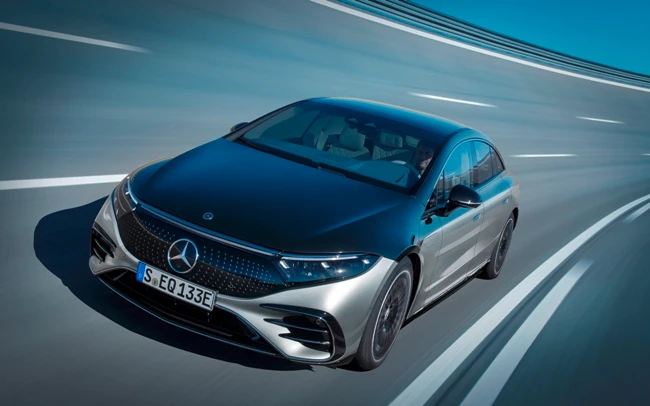
Mercedes-EQ, EQS, V 297, 2021
Mercedes says the initial models will be the EQS 450+ with 245 kW and the EQS 580 4MATIC with 385 kW. The rated power consumption rates are quoted as 20.4-15.7 kWh/100 km, and 21.8-17.4 kWh/100 km. New technology for the batteries has them enabled with a higher energy density. Of the two batteries to be available, the larger will have a usable energy content of 107.8 kWh. Mercedes says this is around 26 percent more than the EQC, their EV SUV.
It’s tech that is bespoke for M-B, with the software having been fully developed by the company and allowing over the air updates. This keeps the management system up to date, and for the life cycle of the battery. In respect to the charging rates, the DC fast charge stations pump in 200kW( and 300km in around 15 minutes. On a home charger system the EQS charges up to 22kW with AC power. The software will also allow intelligent charging programs and battery-saving charging.
A key component of EV technology is is energy recuperation. The EQS uses a program called DAuto, which can recuperate energy from deceleration to zero without the need for the brake pedal to be utilised. Smart cruise tech employs the same mechanisms with vehicle traffic ahead of the EQS. Intelligent energy recovery is situation-optimised with the aid of ECO Assist and acts with foresight, taking into account traffic conditions or topography, among other things, and up to 290kW can be generated. The driver also can set three energy recovery levels and the coast function via paddle shifters on the steering wheel.
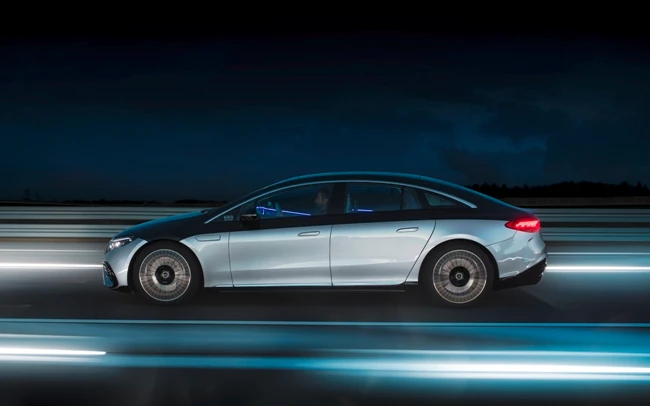
Mercedes-EQ, EQS, V 297, 2021
Also available as OTA or over the air will be the activation of vehicle functionalities. This includes two driving programs for younger aged drivers and for service staff. Light entertainment in the installation of games will also be available. Plus the updates will allow personal preference settings such as changing the steering angles for the rear wheel steering from the standard 4.5 degrees to the maximum 10 degrees. Planned is the activation of subscription services and testing on future programs.
Aerodynamics plays a big part in vehicle fuel efficiency and the new EQS has plenty of aero in the design. in fact, it’s currently rated as the most aerodynamic car available with a drag coefficient of 0.20cD. In conjunction with that slippery body is the reduction of wind noise at speed, improving comfort levels.
The need for aero is due to the EQS being on a new chassis architecture to provide a home for the powertrain. Mercedes-Benz calls the design language Sensual Purity, with smooth, organic, lines, a reduction in the join lines in panels, the fastback styling. The front end is a “Black Panel” look with the headlights running seamlessly into the grille panel which can be optioned with a 3D star pattern to complement the three-pointed Mercedes star.
Embedded throughout the EQS is a network of sensors, up to 350 of them, depending on specification. Amongst the types of information recorded are distance travelled, ambient lighting conditions, acceleration rates and speeds achieved. AI then utilises these datasets to adjust the car on the fly. This includes monitoring the battery charge levels in respect to the distance required to see the next charging point thanks to the onboard Navigation with Electric Intelligence.
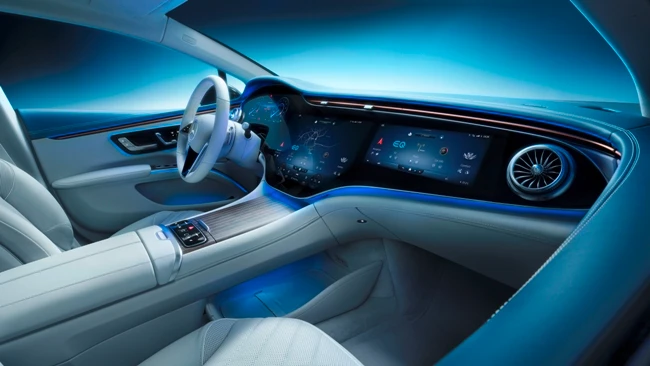
Mercedes-EQ, EQS 580 4MATIC, Interieur, Nevagrau/ Iridescentblau, AMG-Line, Edition 1; MBUX Hyperscreen; ( Stromverbrauch kombiniert: 20,0-16,9 kWh/100 km; CO2-Emissionen kombiniert: 0 g/km) // Mercedes-EQ, EQS 580 4MATIC, Interior, neva gray/ iridescent blue, AMG-Line, Edition 1; MBUX Hyperscreen ; (combined electrical consumption: 20.0-16.9 kWh/100 km; combined CO2 emissions: 0 g/km)
Being a class-setting EV, the EQS packs in some high-end green technology for the passengers. An example is the HEPA filter than can be set to fully clean the air inside the cabin before passengers enter with the onboard data system, MBUX, able to display particulate levels inside and out. Recycled materials are used in areas such as the carpets. The manufacturing process is fully carbon-offset as well.
The MBUX Hyperscreen is the absolute highlight in the interior. This large, curved screen unit sweeps almost from A-pillar to A-pillar. Three screens sit under a cover glass and appear to merge into one. The 12.3-inch OLED display for the front passenger gives him or her their own display and control area. The entertainment functions are only available there while the car is being driven in accordance with the country-specific legal regulations. Mercedes-EQ relies on an intelligent, camera-based locking logic: if the camera detects that the driver is looking at the front passenger display, it is automatically dimmed.
As part of its Ambition 2039 initiative, Mercedes-Benz is working on offering a carbon-neutral new car fleet within 20 years from now. By as early as 2030, the company wants more than half the cars it sells to feature electric drive systems – this includes fully electric vehicles and plug-in hybrids. In many areas, Mercedes is already thinking about tomorrow today: the new EQS is designed to be correspondingly sustainable. The vehicles are produced in a carbon-neutral manner, and resource-saving materials such as carpets made from recycled yarn are used. This is because Mercedes-Benz considers the entire value chain, from development and the supplier network to its own production. Mercedes-Benz AG has had its climate protection targets confirmed by the Science Based Targets Initiative (SBTI).
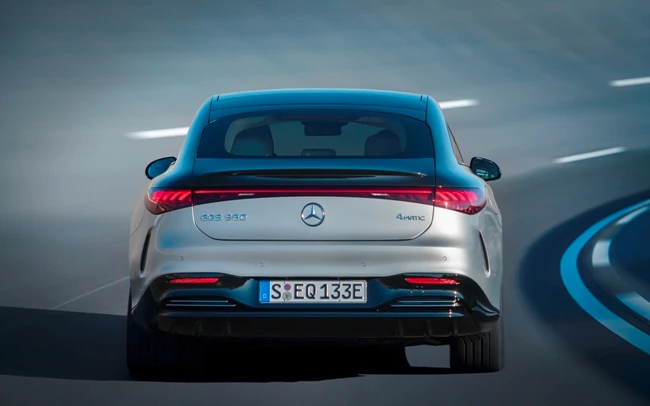
Mercedes-EQ, EQS, V 297, 2021